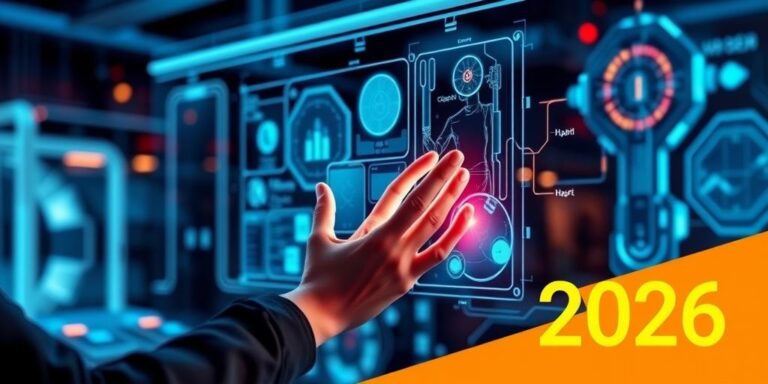Haptic Feedback Reaching New Levels of Realism (2026)
The world of haptic feedback is on the cusp of a revolution. What was once limited to simple vibrations in our phones and game controllers is evolving into a sophisticated technology capable of simulating a wide range of tactile sensations with remarkable realism. By 2026, haptic feedback systems are poised to transform industries ranging from gaming and entertainment to healthcare and manufacturing.
Key Advancements Driving the Haptic Revolution
Several key technological advancements are converging to drive this haptic revolution:
- Advanced Materials: New materials, such as smart polymers and metamaterials, are enabling the creation of haptic devices that are both more precise and more versatile. These materials can change their shape, stiffness, or texture in response to electrical or magnetic fields, allowing for the simulation of a broader range of tactile sensations.
- Miniaturization: The miniaturization of haptic components is making it possible to integrate haptic feedback into a wider range of devices, including wearables, mobile devices, and even clothing. This miniaturization is being driven by advances in microfabrication techniques and the development of new microactuators.
- Artificial Intelligence (AI): AI algorithms are playing an increasingly important role in haptic feedback systems. AI can be used to analyze user input and generate haptic effects that are tailored to the specific context. AI can also be used to learn from user feedback and improve the realism of haptic simulations over time.
Applications Across Industries
The advancements in haptic feedback technology are paving the way for innovative applications across various sectors:
- Gaming and Entertainment: Immersive gaming experiences will become even more realistic as haptic feedback allows players to feel the impact of explosions, the texture of different surfaces, and the subtle nuances of character interactions. Virtual reality (VR) and augmented reality (AR) experiences will also be enhanced by haptic feedback, making them more engaging and believable.
- Healthcare: Haptic feedback is set to revolutionize medical training and rehabilitation. Surgeons can use haptic feedback to practice complex procedures in a realistic virtual environment, while patients can use haptic devices to regain motor skills after a stroke or injury. Furthermore, diagnostic tools incorporating haptic feedback could allow doctors to detect subtle changes in tissue texture, aiding in early disease detection.
- Manufacturing: In manufacturing, haptic feedback can be used to improve the precision and efficiency of tasks such as assembly and quality control. Workers can use haptic devices to feel the texture of materials, detect defects, and guide their movements with greater accuracy. Remote operation of machinery in hazardous environments will also benefit from the added sense of touch.
- Education: Haptic technology offers the potential to create more engaging and effective educational experiences. Students can use haptic devices to explore virtual models of molecules, feel the texture of ancient artifacts, or dissect a virtual frog without the mess. This hands-on approach to learning can lead to a deeper understanding of complex concepts.
Challenges and Opportunities
Despite the immense potential of haptic feedback technology, several challenges remain:
- Cost: Haptic devices can be expensive to manufacture, which can limit their adoption in some applications.
- Complexity: Developing realistic haptic simulations can be technically challenging, requiring expertise in materials science, engineering, and computer science.
- Standardization: The lack of standardization in haptic feedback technology can make it difficult to integrate haptic devices from different manufacturers.
However, these challenges also present opportunities for innovation and growth. As haptic technology matures and becomes more widespread, costs are likely to decrease, and standards will emerge. This will pave the way for even more creative and impactful applications of haptic feedback in the years to come.
The Future is Touch
By 2026, haptic feedback is poised to become an integral part of our daily lives, enhancing the way we interact with technology and the world around us. From immersive gaming experiences to advanced medical training, the possibilities are endless. As researchers and developers continue to push the boundaries of what is possible, we can expect even more exciting advancements in haptic feedback technology in the years to come.




